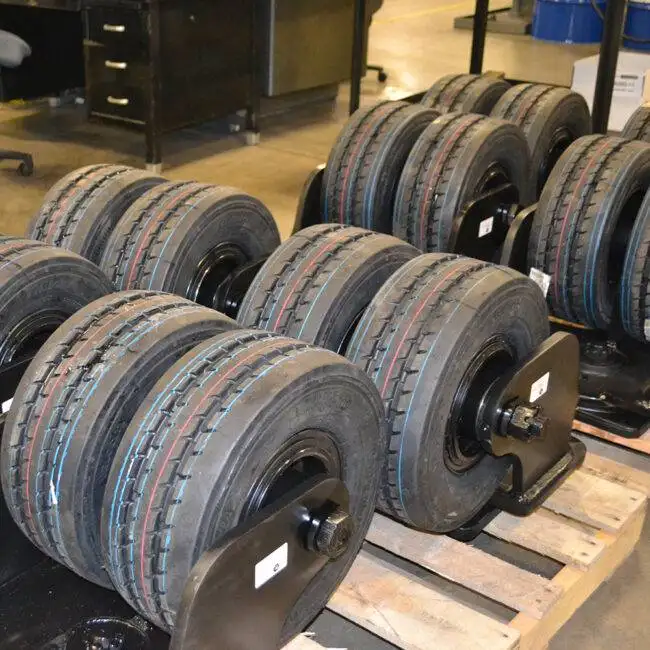

When you think of a caster, you probably imagine a caster wheel that is solid in nature and made of a variety of materials such as iron, steel or polyurethane. A pneumatic wheel is different. They’re made of rubber and filled with either air or foam and fit snugly against a metal hub when properly inflated. You can find these in numerous styles, sizes, and capacities to suit your needs, and they are just as common in heavy-duty applications as in light-duty industries.
Casters with pneumatic wheels, also known as pneumatic tires, offer a softer alternative than most other industrial caster wheels. The pneumatic tires cushion the load and roll over obstructions with ease. These casters provide longer wheel life, less maintenance and high shock absorbency. They are also a great choice for outdoor use, especially on rough of uneven surface including gravel, cracked cement, uneven surfaces, and other irregular surfaces.
Semi-Pneumatic wheels can look very much like a pneumatic wheel on the outside, but inside is a different story: Semi Pneumatic wheels feature a dense, molded rubber that has some elasticity and aren’t pressured, so they don’t require air or foam and they won’t go flat. These wheels are good for indoor and outdoor applications.
Features |
Applications |
|
|
Pneumatic wheels offer several unique benefits in industrial applications, and most of those stem from the wheels’ ability to absorb a great deal of shock and cushion the load, even on uneven surfaces or rough terrain. This is a big benefit when moving fragile loads that can become damaged easily or moving loads over uneven or debris-filled surfaces. Another advantage of the soft rubber tread and shock-absorbing abilities is that the wheels are very quiet when in use. This helps improve working conditions because operators aren’t subjected to loud noises which could damage their hearing.
Because Pneumatic caster wheels are softer than many other options and have a larger footprint, this creates more friction with surfaces. As a result, more initial force is needed to start the load moving and maneuvering around corners. This large footprint also makes the wheels harder to swivel and often the caster will require a longer swivel lead. Because the wheels are lighter, the chance of caster wheel flutter also increases, which can be negated by the increased swivel lead.
Because they are air-filled, pneumatic caster wheels must be monitored. If they go flat, it could pose serious problems if it happens with a full load. One way to prevent this is to fill the wheels with polyurethane foam rather than air. This takes care of the problem with flats, but it does reduce the cushioning effect of the wheels.
Taking all these factors into consideration and finding out more about pneumatic wheels will help you determine the best option for your industrial needs. If you have any questions, the engineering staff at Caster Concepts has many years of experience in the use of pneumatic tired wheels for industrial applications. We would be happy to answer any questions you may have.